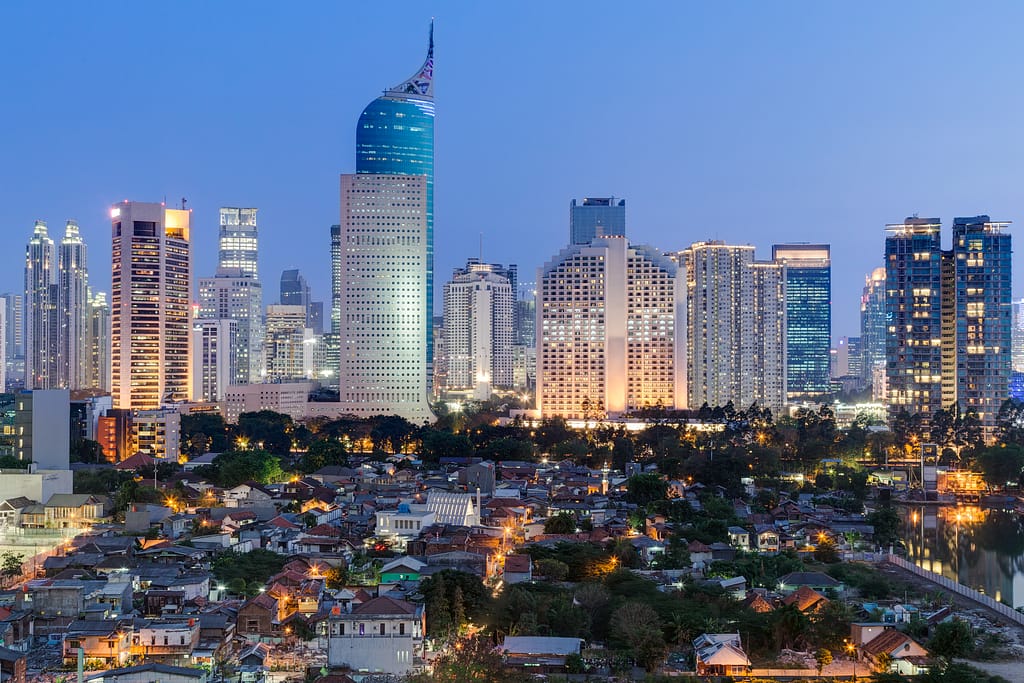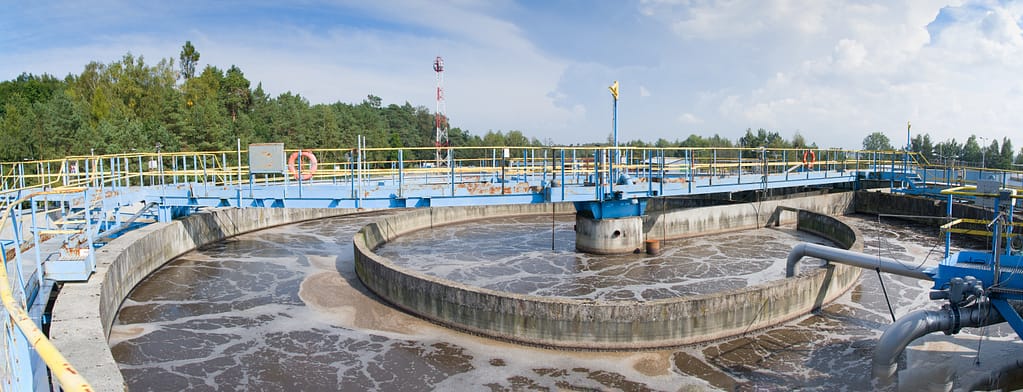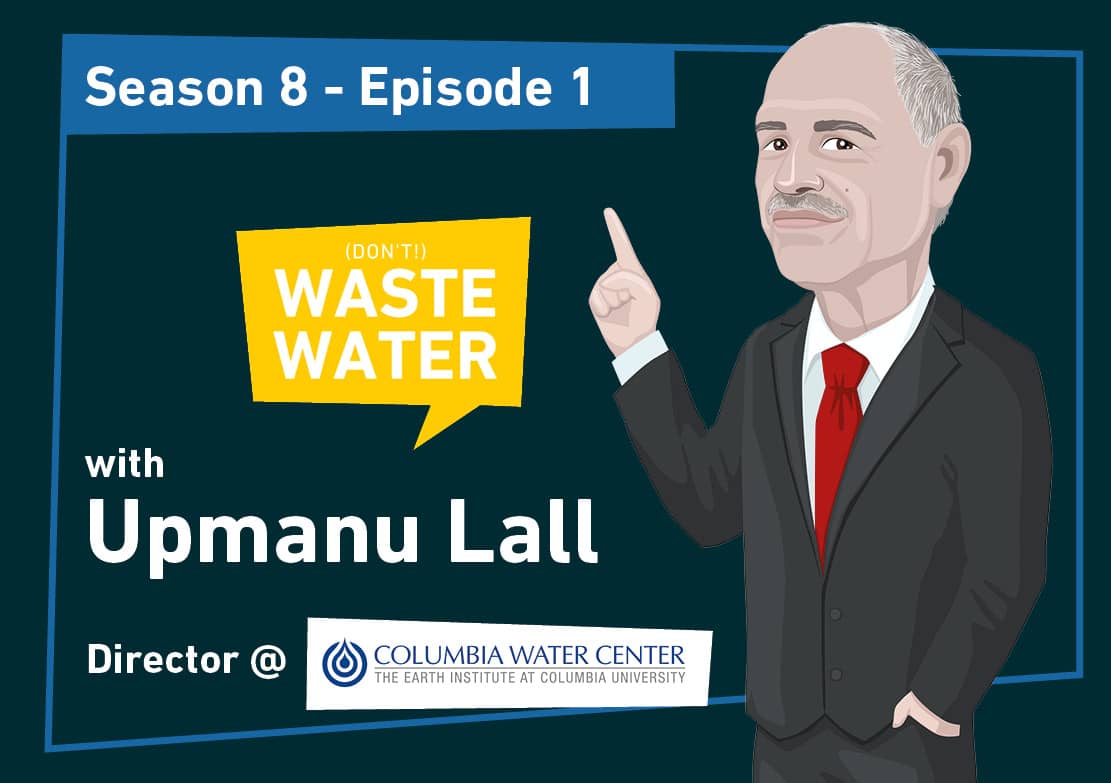At the exact point in time where governments are heavily investing in renewing their central water infrastructure, distributed water treatments still grow at a 3x faster pace! Does this mean we will soon all have a Water Filter ordered from Amazon and screwed under our sinks? Let’s explore:
with 🎙️ Upmanu Lall – Director of the Columbia Water Center
💧 The Columbia Water Center aims to creatively tackle water challenges of a rapidly changing world where water and climate interact with food, energy, ecosystems, and urbanization.
This episode is part of my Series on the Water Crisis in America
What we covered:
🥷🏽 How many of the water challenges we face fly under the radar in places where no one actually expects them – and what to do about it
🎛️ How centralized infrastructure may not be future-proof and how decentralized and distributed systems rapidly take over
🇮🇳 How that takeover of decentralized water treatments already induced a kind of post-utility era in places like India
🛒 What the rapid evolution of the Amazon Water Filter segment tells about the expectations of end-users and the reactivity of some sections of the Water Industry
📋 How the rethink goes beyond under the sink water filter to also address flood mitigation, engineering approaches, and risk management
🇨🇳 How the best example for a successful roll-out of new water management approaches may well come from China
💧 The Columbia Water Center and its missions, disrupting century-old approaches, reinventing water utilities, leveraging digitization… and much more!
🔥 … and of course, we concluded with the 𝙧𝙖𝙥𝙞𝙙 𝙛𝙞𝙧𝙚 𝙦𝙪𝙚𝙨𝙩𝙞𝙤𝙣𝙨 🔥
Resources:
➡️ Send your warm regards to Upmanu on LinkedIn.
➡️ Check Columbia Water Center’s website
➡️ A big THANK YOU to Sciens Water for enabling this episode!

is on Linkedin ➡️
Teaser 1 – Water disruptions are happening right now – and not only in remote places
Teaser 2 – The Difference between Centralized and Decentralized Water Infrastructure
Teaser 3 – 70-75% of the costs lies in the Water network and pumps: is there another way?
Teaser 4 – Set quantitative targets or you’re just talking!
Teaser 5 – Amazon Water Filters have been rapidly evolving in a short period of time
Teaser 6 – Central Water Utilities won’t like the new opportunities in radical decentralization!
Full Video: My conversation with Upmanu Lall
Table of contents
- What we covered:
- Resources:
- Teaser 1 – Water disruptions are happening right now – and not only in remote places
- Teaser 2 – The Difference between Centralized and Decentralized Water Infrastructure
- Teaser 3 – 70-75% of the costs lies in the Water network and pumps: is there another way?
- Teaser 4 – Set quantitative targets or you’re just talking!
- Teaser 5 – Amazon Water Filters have been rapidly evolving in a short period of time
- Teaser 6 – Central Water Utilities won’t like the new opportunities in radical decentralization!
- Full Video: My conversation with Upmanu Lall
- Full Transcript:
- Introducing the Columbia Water Center
- What is it that we should solve about Water?
- Rethinking Water in Concrete Steps
- Are we Rethinking or Disrupting Water?
- What is the current level of Water Risk in the US?
- How do you roll-out the new Water normal?
- What do our main stakeholders expect from their water management?
- Will we enter the post-utility era?
- A country in the post-water utility era: India
- Other Episodes:
Full Transcript:
These are computer-generated, so expect some typos 🙂
Antoine Walter: Hi, Upmanu. Welcome to the show!
Upmanu Lall: Hi, how are you today?
Introducing the Columbia Water Center
Antoine Walter: It’s interesting because I’m hosting the host. I’m here in your house somehow. What is the Columbia Water Center?
Upmanu Lall: The Columbia Water Center got established in 2008, and the idea was to, from an academic perspective, study issues related to global water sustainability. And to do it specifically with the idea that we would start solving problems because a lot of academia studies what’s going on and reports on the problems, but not so much on what we can do to actually change that situation. Hence rethinking water!
What is the Columbia Water Center?
The Columbia Water Center is a research center at Columbia University that focuses on water resource management and climate change. It is based at the Earth Institute at Columbia University in New York City. The center conducts research, provides education and training, and works with governments, organizations, and communities to develop and implement solutions to water resource challenges.
Some of the research areas that the Columbia Water Center focuses on include water availability, quality, and accessibility; water-related disasters and their impacts; and the role of water in sustainable development.
The center also works on projects related to water governance, policy, and finance, as well as the intersection of water and energy. Overall, the goal of the Columbia Water Center is to improve the management of water resources and promote the sustainability of water systems in the face of changing climate conditions.
What is it that we should solve about Water?
Antoine Walter: So you’re looking for solutions, but that has to start with identifying the problems. What are the most pressing challenges?
Upmanu Lall: Water is one of those most interesting things in the sense that the number of problems that people bring to you is unlimited.
If you pay attention to the way the UN presents the situation; it’s a water sanitation health issue. We have people who don’t have access to clean water. We have people who don’t have access to the ability to discharge wastewater. So these are the most publicized problems associated with water.
If you look at it from a sustainability perspective, people start talking to you about scarcity and places where people are no longer able to grow crops. Obviously, they don’t have access to water as such. These are things that I think get well publicized.
Water challenges in unexpected places often come more as a surprise
The fact that even in places such as the United States, People have these issues today similar to what perhaps were experienced in the 1920s, and they’re unsolved comes as a bit of a surprise sometimes. But maybe there are not so many such people.
Water issues also mean floods. Water issues also mean that we will have droughts in a place that is normally well-stocked with water. In that context, we had a few years ago, Cape Town and Rio as day zero. So they got a lot of publicity.
It’s not that easy for people to connect to these issues in their own life because they seem remote. Jakarta, with a lot of pumping, is now going to be replaced by a new city because it’s sinking. Oh, that’s interesting. It’s Jakarta. It’s not happening here. Well, it is happening in California. It is happening in Houston.

Going from problem to solution in tangible actions
It’s happening in various places. We just don’t realize that sometimes. So one of the things as an academic institution is yes, we want to bring the solution to those problems. Think about what are the ways by which we can solve them. And solution here means something that is technical, something that is financial, and then how is it going to be implemented and stay fixed?
Not that, you know, somebody flies in, has a flashy thing, and then a couple of years later, there’s nothing to show. It’s an academic field in that sense because what we are studying is the diagnosis of the problem. All the way through to sustainable solutions, from an interdisciplinary perspective, and that’s what we do at the Columbia Water Center.
Rethinking Water in Concrete Steps
Antoine Walter: So when you say you have to rethink water, how does that translate into facts?
Upmanu Lall: Yeah, so let, let’s take one example because it’s useful to actually get specific on these things. So the way our urban water infrastructure is designed nowadays for the last century has been dominated by what is called centralized treatment systems.

And what is meant by a centralized system is that typically you may have one large water treatment plant, one large reservoir, one large well field… And these are all where you collect the water, store the water, treat the water, and then it’s piped to every place where it is needed on the return side.
Because most of this water is in an urban setting, maybe 90% of the water actually is not evaporated or lost. So it’s brought back as wastewater. And so that’s in large sewers. It’s pumped to a central location, and treated there to some standard, which would meet environmental needs. And then discharged.
A city that’s downstream of that location perhaps picks that up, treats it some more and supplies it to the people.
Rethinking centralized water infrastructure
So this is kind of the structure that we have developed. It’s difficult to maintain this infrastructure. The cost of maintaining it is not borne fully by the people, and as a result, there’s default maintenance, and it breaks. And then, since the cost of replacing all this is huge, and there’s no subsidy available to do that, this just gets worse and worse and worse.
So that’s a situation, that’s a problem that’s evolved over time. There was nothing wrong with the original thinking, perhaps because they were recognizing that there were economies of scale in building one large treatment system. Economies of scale in building a large reservoir because you don’t use up as much land as you would for storing the water in many places, and you won’t hire as many chemists as you would need to run treatment plants in lots of different locations.
So the rethinking today is that we realize that once you look at the existing systems, around 70 to 75% of the cost is actually in the pipes and pumps, not in the treatment and not in the storage. So you look at that and say, well, these pipes are failing, and they cost half a million a mile to replace, and people aren’t willing to do that replacement.
So they’re putting, you know, bandages all over the place. Should we keep doing that, or is there a different way of approaching that?
Digitization offers new perspectives on water management
And today, one thing that is different than at the beginning of the 20th century is that we have a lot of digital information that we can gather using sensors and actually even control infrastructure systems remotely.
You don’t really need ten chemists at ten treatment plants. And ten pump operators at ten pumps to do this. We can do all this remotely, and when we look at things such as Flint, Michigan, where people are talking about lead pipes and so on, what we learned there is that really there was no excuse for these people to be drinking water, which contained lead for two whole years before someone made a story out of it.
We should have been able to sense that we should have had sensors at the point of view, which told us this was what was going on. So once you realize that and you say:
Hey, I really would like to have in my kitchen where I drink the water. Something that tells me is okay, or it’s not okay.
Kitchen Water Filters and Under The Sink Sensors: The Future?
I don’t need to know the details of 50 types of analysis. I just need to know yes or no. Yeah, if I could do that, then if I could put in a treatment system just in my kitchen and at the output of that, I could see that this was okay. That’s fine. I don’t need my shower water. I don’t need my toilet water treated to the same standard as my kitchen. So the rethinking now goes to, okay, if this becomes feasible.
Maybe the wastewater that I’m generating could be treated and reused also, maybe not just at my house scale, but maybe at my neighborhood scale. And if that is possible, I’m really shooting for a much higher quality of service and safety for myself. But this is going to cost. Where do I save the money?
Oh, I could save the money on not having these giant pipes bringing all of this stuff to me because if I can deal with more localized systems, the smaller pipe would cost a lot less and. It turns out that this story is true. So there’s one concrete example of how we are rethinking what our infrastructure system today looks like, how it has evolved, and where it needs to go.
Are we Rethinking or Disrupting Water?
Antoine Walter: But that is maybe beyond rethinking. That is disrupting because, yes, basically, you’re saying the central utility time is over. Let’s go to the distributed era and let’s go to a water fit for purpose. Hence the specific water filters for drinking water and maybe different types for the washing machine and so on.
Upmanu Lall: This was one example. If I talk about floods, we have other examples. So what’s happening today is that a lot of environmental groups are pushing the idea that we should do green infrastructure for flooding. We should use nature to control this. Historically, what did we do? We built levies.
Another field to rethink: flood management
We built big dams to control flooding. So this is going in the other direction, and in reality, if you think about it, there’s merit to both. Because if you have a very extreme event, there’s no way that nature-based solutions will win. There’s a limited amount of effectiveness that you can have.
So nuisance flooding events, moderate flooding events, you, you could probably reduce the impact of those. But then you need something which is bigger. If you build only the bigger thing, then you have a huge expense. You have a dislocation of people. That’s not a great idea either. So how do you combine those two?
Rethinking water risk mitigation and insurance
And then the third piece there that comes up is what? Insurance. So what people do is that they think about insurance, but the government subsidizes that insurance so people live there, and that overall increases the risk. The insurance company doesn’t really give you credit for having flood risk reduction associated with it.
So if you start thinking in a new way, and it’s being done at a community scale or at a city scale, now we have to start thinking about where are we going to give permits to people to actually locate what should be located there. So that’s a zoning issue. In combination with that, if we are going to build infrastructure for flood control, where is it most effective and where are we going to put in a nature-based solution?
Rethinking water management and policies
And where are we? Where are we going to put in something that takes up land, which could be used for other things? So this combination of approaches has to bring together, Landscape architects. It has to bring together people who are going to develop real estate for a joint solution. One of the imperatives that will drive these kinds of things is that even where we already have our buildings and we have the infrastructure and things are exposed. That exposure is changing very rapidly with climate change, with sea level rise, and with very dramatic changes in flood potential in the urban setting. Floods are manifest through sewers, and floods are manifest through rivers overflowing, so those are two dynamics.
Last October in New York, eight people died from basements being flooded because the sewers could not contain the water from the storm. Part of this was because the storm was extraordinary. Not unprecedented. Part of it was because the sewers were blocked. So these sewers, even though they may have been overdesigned at some point, they have not been maintained.
So they’re choked. They have trash in there, and they had not cleared it. So as a result, we look at this situation and we say, okay, this was a one-off situation, but if you think about this in the long run, how should we be rethinking it? Clearly, in a place like Manhattan or Queens, there’s not that much opportunity for nature-based solutions.
Dynamic sewers will play an increased role in dense urban settings
You cannot create new parks. You can capture a certain amount of water on people’s roofs, but what do you do with it? Then maybe we can use that water, but still, there’s a limit to what you can do with that. So in this situation, are we going to tear up the streets and put in big pipes? Or are we going to put in a maintenance solution such as robots that regularly clean these?
Obviously, that’s one of the things we have to be considering. We don’t have storage in a place like Manhattan, but we have an extensive sewer network, which is large pipes. If you think about storms, the storms move from the south through the north, or the storms come in from the east and go to the west. So, If we were to start thinking about where is the water coming into the sewers and where is it going?
Montreal has already done some experiments where they have gates and pumps. The sewer system itself is using use for storage. So where at the moment we don’t really have that much rain coming in, water is pumped from other areas to those sewers. Mm-hmm. and around in other ways. So we have to start thinking about more active rather than passive solutions.
What is the current level of Water Risk in the US?
Antoine Walter: Part of the diagnosis is to measure how many people might be at risk. And if I recall right, you’ve been researching the number of Americans exposed to potentially bad infrastructure. If I’m right, you found out that 63 million Americans are exposed to these bad conditions, which makes up about 20% of the population.
Upmanu Lall: This is an interesting question. Depending on what you look at, the number of people exposed obviously will be quite different. Right now, I would say there are about one-fourth of the population is exposed to something to do with drought. During the pandemic, we had major supply chain issues that emerged because of the inability to go get people to work and to do things of that sort.
During the drought and flood combination with the pandemic, we have seen that much of the agricultural productivity has suffered, but the mobility of goods has suffered in the process. If I look at it from that perspective, the fact that cherries that come from California normally come in the summer, Cost around $3 a pound.

In New York this summer, it’s been seven or $8 a pound. If you get what I’m driving at, it’s not 63 million. The entire country’s population has been impacted by that particular event because financially, the affordability of the kind of things that they’re used to, and their quality of life has been impacted.
How do you roll-out the new Water normal?
Antoine Walter: When you’re making this scenario where we might be going more distributed, we might leverage nature-based solution when possible and when not possible, we might go for more gray engineering approaches with the pumping of the sewers. How much of that gets then executed in the facts, and how do you at the Columbia Water Center help those ideas become true?
Upmanu Lall: The amount of new ideas that get executed varies. Obviously, this is a very slowly evolving sector. I think that is true. On the other hand, as the needs grow, so does the speed of solutions. And we have reached a point where most of our infrastructure in the United States is now quite old. So something has to be done, and the climate trigger is accelerating that timeframe.
So I think things will change. What I will say is that we have worked around the world on every continent at this point, including Australia. And clearly, things change at very different rates in different places. Much of the water stories are in the public sector, so it really depends on how effective the public sector is in different places.
Can China become a Water role model?
The country that I’ll call out is China. The rate at which interesting solutions and innovative solutions are being implemented in China is really impressive, and I think. Just as the world looked to America in the 20th century for, you know, being the standard bearer for what should be done. If we don’t really move here, China will be the standard bearer.
Things are changing so rapidly in China that I would say, even up to five or ten years ago, they were looking at American companies to come in and do whatever it was that they needed services for. Just as is the case with electronics, you know, so we look at Apple products being made in China, and people talk about how the Chinese are very good at copying IP and other things from the US all that may be true, but at the same time, the indigenous innovations that are coming out of China, especially in the deployment of technology, are truly remarkable.
You know, if you look at the electric vehicle, we have the Tesla story, but in China there are 40 or 50 Tesla like stories, including vehicles that are very small to vehicles that are very large, and they’re on the ground, they’re being sold, and they’re being deployed at prices at $3,000 on up to a hundred thousand dollars.
Replicating what was proven to work
So the scale of innovation and deployment, you know, in that kind of a governance system is quite remarkable. The world will have no choice but to emulate that.
Antoine Walter: So have five years plan and having ambitious targets, which say COD might not be higher than 50 milligrams per liter. I do know it’s the strictest worldwide, but still, let’s do it.
Upmanu Lall: The way I’ve been approaching this when I give talks is, So, for example, I learned quite a lot from Professor Jeffrey Sachs when he was the head of the Earth Institute here.

One of the things he did was set the millennium development goals, and his point was that if you don’t set quantitative targets, you don’t know really what you’re trying to achieve; you’re just talking.
What do our main stakeholders expect from their water management?
I have taken that, and it’s very difficult to say what should be a quantitative target for what in different places. So I’ve translated that to the following, if you are a consumer, because ultimately that’s what this is about; it’s not about a government agency doing something for some reason. It’s about the ultimate user of the water and the person who wants to be protected from the flood.
What are your aspirations? You should say them out clearly. If you say that I should be drinking water, which has no contaminants at all, and I want to be able to measure it, you should state that as an aspiration and say, I want that for the same price as I pay for water now, which is not safe. That sets a target and if enough consumers say that there will be someone who’ll step up to do that.
And this is happening from the private sector today, and I think that some of it is great, some of it will have to change.
An example of customer engagement: the evolution of Amazon Water Filters
One example I’ll give you there is five years ago, if you went to Amazon and you wanted to buy a reverse osmosis filtration system for your kitchen, you were looking at spending $500 for the unit, and you would buy filters separately.
It would reject two-thirds of the water you put into it as waste, a relatively low-pressure system. Today, if you go to Amazon, there will be more vendors than you saw five years ago. And for between a hundred to $200, you’ll get a system exactly like that with one year of filters included. And for $500, you get something that rejects less than 25% of the water coming into it.
Actually, it will perform a lot better than any of the other systems and has all kinds of sensors and stuff like that, telling you what you’re actually consuming. So why did this happen? It’s because a lot of consumers who could afford it started going there and asking for this, and I think that’s the kind of thing that will start changing things more rapidly than anything else.
Will we enter the post-utility era?
Antoine Walter: So when we are further developing or trying to fix the global infrastructure, we are pushing a dead body because that’s not future-proof? I’m being extreme here, I know, but…
Upmanu Lall: I think you are right in some ways. The very first thing we talked about in this conversation was the centralized large infrastructure versus a decentralized one.
It’s not clear that an existing utility that operates that centralized infrastructure is very excited about changing. If we keep pushing on people who are doing that, it’s not clear that you’re going to go anywhere very easily.
If you start from the consumer end and the consumer says, what you’re giving me is crap and I’m paying a hundred dollars for it.
I can turn around, install a wastewater treatment system, and then a reverse osmosis system after that. So I. Water, which I know of a very high quality, and I can do that at a per unit cost, which is less than what you’re charging. Hmm. I’ll pay you for the incoming water because I can’t generate that under by.
I do some rainwater harvesting myself, which maybe someone will start doing and I’m changing the game!
Water utilities may have to reinvent themselves
Now, where is the revenue for this dead beast, the large infrastructure guy going to come from in that situation? They will not like it. They will not like you to enter into that game, whatever that game is.
But slowly, it will happen. Whether it is happening through people outsourcing the water supply or it’s happening through innovation? That’s the only question.
Antoine Walter: It’s even happening more than slowly. Because if you look at the curves for the investment in bottled water in the US compared to utility water… Next year bottled water will outperform utility water.
That means already today, in the US, you would be spending more on bottled water.
A country in the post-water utility era: India
Upmanu Lall: In India, at this point, there is no household, which is middle class and above, that does not have a reverse osmosis system in their kitchen. That’s how it has become. Okay. And the reason for that is, you know, when I was growing up as a kid, we had water metering.
I lived in a city that was at a very high standard. It was designed by Le Corbusier. And so, you know, it was modern India in, in effect, the quality of water supply was high Western standards. And the, uh, the bills were, you know, there today, that same city gets two hours of water in the morning and two hours of water in the evening.
There’s no way you can maintain the quality of the supply with intermittent supply. So everybody has these, those people tell me that one reason they are in this situation is when they propose to raise rates. People protest. So if they don’t have more money, they cannot improve the system. So there’s solution is we’ll just shut it down most of the time because then I do water.
So you ask, why are people not willing to raise rates because the rate you’re charging them is ridiculously low. Well, we don’t understand. People just don’t want to pay for water. So you go and do some informal sampling. The answer you get most often as well, this is really poor service. Why would I pay for something that is such poor?
So it’s a catch 22 take circle and that’s what I’m seeing is that as the service quality here deteriorates, people’s willingness to pay will go down because we have seen that in India and then they start relying on alternate solutions. I think this debt based that we are talking about will have to deal with this sooner or later.
Well,
Antoine Walter: Upmanu have so many more questions, but I have to be cautious with time. You’re the host here. You probably have to move on.
Upmanu Lall: Thanks! Thank you for the conversation.












